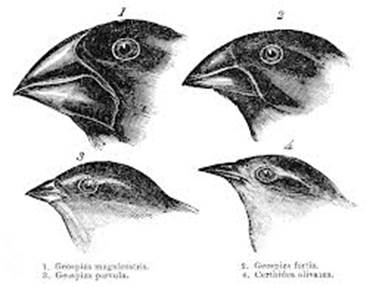ResveratrolConsumer
avert online
consumer fraud
ResveratrolQuiz
test your knowledge
New E-Book
How the world got lost on
the road to an anti-aging pill
Subscribe to our newsletter to receive email notifications when new articles are posted.
June 24, 2013: by Bill Sardi
It is ironic that two noted biological researchers, one who was arguably the most prominent biologist in the early 1900s, and another extant laboratory investigator almost one-hundred years later, would both get tripped up on some seemingly innocuous ink blots.
It was Paul Kammerer himself, the discredited biologist of yesteryear who allegedly conducted specious breeding experiments with amphibious animals (salamanders, olms, toads), who had a side hobby of collecting data on odd coincidences. (Kammerer wrote an entire text on the subject (Das Gesetz der Serie – The Law Of Seriality– 1919).
In a historical repeat of Kammerer’s concept of seriality, a living biologist has also been falsely accused of scientific deception as was Kammerer, in a modern replay of the case of the incriminating ink blots.

In the archives of scientific fraud, Paul Kammerer’s (1880-1926) name stands out. In fact, Kammerer’s name is cited as a chief example of scientific fraud.
Kammerer was arguably the most prominent biologist of his time. The New York Times hailed him as “the next Darwin.” But today his legacy is said to be non-existent. Yet Kammerer, who had graduated in biology from the Vienna Academy 1904, and conducted prolific breeding experiments with amphibious animals (salamanders, olms, toads), faced no challenges to the authenticity of his laboratory tests until they didn’t corroborate the prevailing biological dogma of Darwinism.
Kammerer’s experiments showed living organisms can pass traits on to their offspring that have been acquired in their lifetime. Darwinian evolution holds that only over many generations do gene mutations occur which produce higher forms of life.
Looking back, arguments against Kammerer’s experiments were nonsense given that Charles Darwin himself had drawn changes in bird beaks that he observed over his two 2-month-long trips to the Galapagos Islands. Those changes certainly did not take many generations to materialize. It appears Darwin also documented evidence for epigenetics – the dynamic non-static mechanism within genes that was not discovered until the 1970s. Inexplicably, even though Darwin’s bird beak drawings are obvious evidence against Darwinian evolution, they are used to attest the foundations of Darwinian biology – survival of the fittest and random mutation.

What Kammerer demonstrated was that midwife toads, who usually breed on dry land, if kept in a heated tank, will retreat into water to cool off and be forced to mate under water. However, the slickness of their wet skin would make it difficult for them to mate. Kammerer showed within two generations male toads developed black pads on their feet to give them more traction during the slickened underwater mating process. Eventually these toads preferred to mate underwater, a preference that persisted for at least six generations.

The amphibious toad with eggs
that got Paul Kammerer into scientific dispute.
Kammerer’s experiment had initially been met with doubt by other eminent zoologists but none had accused him of fraud. Recognizing disbelief by his colleagues, Kammerer put his toad specimens on display and distributed photographs and reports of his findings.
When only a single display specimen remained, suddenly an antagonist accused Kammerer of injecting India ink into the toads’ forelimbs. Kammerer was reported to have been astonished at this finding. Had the specimen been injected with India ink by an adversary?
Earlier experiments conducted with salamanders also produced allegations Kammerer had manipulated photographic images. The charge was that Kammerer had inked-in colored spots on photos of salamanders.
Kammerer defended this practice, reportedly saying “the glare from the skin gave the impression of spots where none were present and the spots that were present were washed out in the glare.” Kammerer was tagged as the father of “photographic manipulation” in a critical journal report published in 2010.
It took over eight decades to clear Kammerer’s name. Alexander Vargas, evolutionary developmental biologist at the University of Chile in Santiago, writing in the Journal of Experimental Zoology, argues that there are “specific similarities of Kammerer’s experiments to epigenetic mechanisms are very unlikely to have been the result of his imagination.” Vargas studied Kammerer’s research notes and concluded he could be “the actual discoverer of what we now know as epigenetic inheritance” (or gene imprinting).

Arthur Koestler, Kammerer’s biographer (The Case Of The Midwife Toad– 1971), says that biologists should repeat Kammerer’s experiments. Dare they? The foot-dragging by current-day biologists further suggests Kammerer was right all along. It was a conspiracy against Kammerer as strong as those scientists who once insisted the Earth was flat.
In a modern replay of alleged scientific fraud, a noted professor and director of a cardiovascular research center has retreated to his second home in India, having never imagined what happened just a short while before his planned retirement from a major U.S. university.
He is no small-time medical investigator. He wrote over 500 peer-reviewed publications, over 100 review articles and book chapters and 15 entire books. His scientific research focused on cellular, biochemical and molecular genetics of heart disease and antioxidant signaling. He was the editor-in-chief of one highly-rated antioxidant journal, associate editor and consulting editor of two other journals. His name: Dipak K. Das, PhD.
The ink blots that got Dr. Das into trouble are called western blots. These ink blot images are evidence of the proteins made by genes – the evidence of their epigenetic activity.
When Dr. Das was in India at a scientific conference in January of 2012, his university posted online over 60,000 pages of charges of scientific fraud against him. The altered western blots were disclosed. Doctor Das was declared guilty of scientific fraud before he was even given a hearing before a review board.
The university also made other egregious allegations – that he fired a research assistant who knew too much, that he and only he kept the keys to his locked office where alterations in the western blots were performed on his computer, and that the university report was forwarded to the Office of Research Integrity at the National Institutes of Health.
However, this writer had a front-row seat to this debacle as I was in attendance at the very same scientific meeting as Dr. Das. I quickly sought out his former students who were in attendance at the meeting. I interrogated them and found Dr. Das had an open-door office, not a locked office; that he had simply transferred a research assistant to another researcher’s budget when she was doing more work in another lab, and the university report was never forwarded to the Office of Research Integrity.
Suddenly, the university’s web page was taken down and its allegations are simply not available for viewing.
Then Dr. Das’ many scientific reports began being retracted from scientific journals. Evidence of his life-long work was being erased as deftly as the book burning in the novel Fahrenheit 451. Hundreds of news sources accepted the allegations made against Dr. Das’ as fact and Das’ side of the story never got a fair hearing.
Then before a scientific review board, Das was summarily dismissed from his post at the university without being given opportunity to adequately defend himself. An expert witness was not given opportunity to testify.
In Paul Kammerer’s day, the idea of opposing a scientific kangaroo court with a self-bankrolled bevy of attorneys would never have crossed Kammerer’s mind. But today Dr. Das has filed a $35 million lawsuit claiming lack of due process as protected by the 14th Amendment of the US Constitution.
There is also scientific corroboration of Dr. Das’ work. Not only have other researchers conducted similar experiments on different continents that show a red wine molecule called resveratrol protects the heart prior to a heart attack and turns mortal experimental heart attacks into non-mortal events in the animal lab, but National Institutes of Health researchers, using the same heart tissue samples Dr. Das produced his western blot images from, used a more sophisticated microRNA test that upheld Dr. Das’ western blot findings.
Just like Paul Kammerer, Dr. Das conceded that western blot images are often altered, but not for the purpose of deception, but to enhance image quality for re-printing in journals. Investigation reveals it is common practice for editors of scientific journals to request authors to alter western blot images to enhance visualization. Western blot imagery is a perfect tool to “out any researcher.”
The inquisition against Dr. Das may reveal the despicable tactics modern medicine uses to dispel new life saving technologies that may threaten the existing pipeline of income from treating rather than preventing disease. After all, the red wine molecule Dr. Das was studying is poised to make mortal heart attacks a thing of the past. French cardiologists don’t nearly have the bonanza that American cardiologists have. According to the World Health Organization, France has a coronary artery disease mortality rate of 39.8 per 100,000 versus 106.5 per 100,000 in the United States.
Recognize countries where alcohol is consumed frequently have much higher death rates from heart disease, except France. Dr. Das’ red wine pill concept, if adopted by American consumers, would put many cardiologists out of business.
From the same university that accused Dr. Das of scientific fraud comes an unsigned letter, on university letterhead, threatening a red wine pill company with extinction if it dares to help Dr. Das defend himself. This is no made-up drama. In the balance is a previously unimagined advancement in human health – a world without mortal heart attacks. ©2013 Bill Sardi, ResveratrolNews.com
Posted in Resveratrol
Add comments »